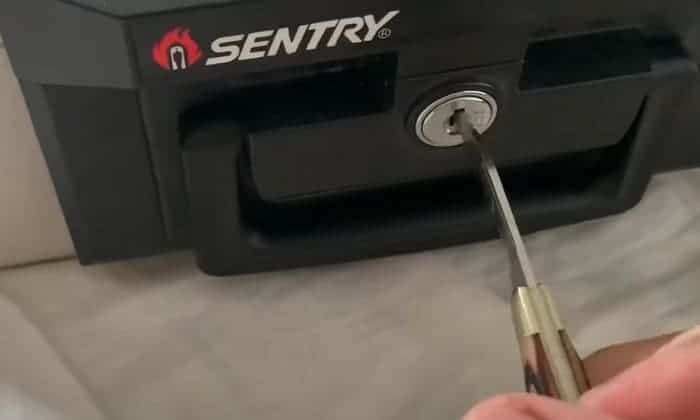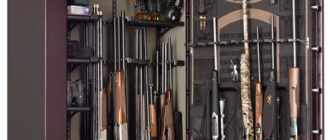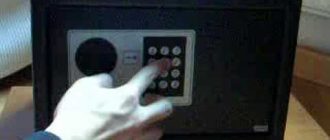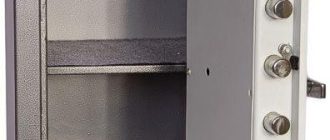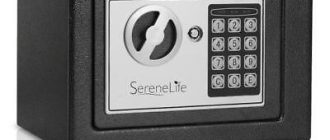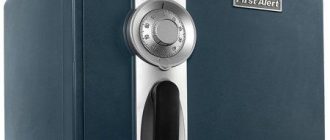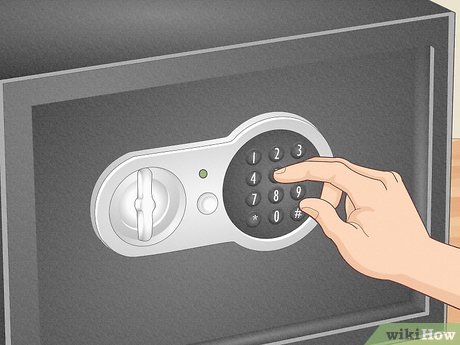
How to open a safe without a key or code
Opening a safe without a key or code may sound like a daunting task, but with the right knowledge and techniques, it can be done. Whether you’ve forgotten the combination or lost your key, there are methods you can use to crack the safe and gain access to its contents. In this article, we will explore expert tips and methods to help you open a safe without a key or code.
First and foremost, it is important to understand that attempting to break into a safe without authorization is illegal and unethical. These methods should only be used in situations where you have legitimate access to the safe but have forgotten the combination or lost the key.
One of the most common methods to open a safe without a key or code is called manipulation. This technique involves carefully listening and feeling for subtle clicks and movements of the safe’s combination lock. By turning the dial slowly and paying close attention to the lock’s behavior, you can gradually discover the correct combination. This process requires patience and skill, but it can be a highly effective way to gain access to a safe without a key or code.
Another method that can be used to open a safe without a key or code is drilling. This technique should only be used as a last resort, as it can permanently damage the safe. By drilling a small hole near the lock mechanism, you may be able to manipulate the internal components to unlock the safe. However, drilling should always be done by a professional locksmith to minimize the risk of damage.
Remember, opening a safe without proper authorization is not only illegal, but it can also compromise the security of the safe and its contents. If you find yourself in a situation where you cannot access your safe, it is always recommended to contact a professional locksmith or the manufacturer for assistance. They have the expertise and tools necessary to safely open the safe without causing any damage.
In conclusion, while opening a safe without a key or code can be a challenging task, it is possible with the right techniques and expertise. However, it is always important to approach the situation with caution and respect for the law. If you find yourself in need of accessing a safe without proper authorization, seek professional help to ensure the security of the safe and its contents.
Importance of Safes
Safes play a crucial role in providing security for our valuable belongings. Having a reliable safe ensures that our possessions are protected from theft, damage, or unauthorized access. They are specifically designed to keep our belongings secure and provide peace of mind.
One of the key features of a safe is its combination lock or code. This unique combination or code acts as a barrier that prevents unauthorized individuals from gaining access to the contents of the safe. Without the correct combination or code, it becomes extremely difficult for someone to break into the safe.
In addition to the combination lock or code, safes can also be opened with a key. This provides an additional layer of security, as the key is usually kept separate from the safe and only accessible to authorized individuals.
Safes are designed to withstand various break-in attempts. They are made from durable materials and equipped with advanced locking mechanisms that are difficult to crack. This ensures that even the most determined intruders would have a tough time gaining access to the safe.
Having a safe allows you to store your valuable belongings in a secure and organized manner. It can protect important documents, jewelry, cash, and other irreplaceable items from theft, fire, or water damage.
Furthermore, safes are not only useful for personal use, but also for businesses. They serve as secure storage for important documents, sensitive information, financial records, and other valuables. They provide an added layer of protection against theft or loss of confidential data.
In conclusion, safes are an essential investment for anyone who values the security of their belongings. Whether it’s protecting personal possessions or sensitive business information, a safe offers peace of mind and ensures that your items remain safe, even in unforeseen circumstances.
Reasons for Opening a Safe without a Key or Code
There are several reasons why someone may need to open a safe without a key or code. In some cases, the key or combination may have been lost or misplaced, making it necessary to find an alternative method of gaining access to the safe. Additionally, there may be situations where it is necessary to open a locked safe without the owner’s knowledge or permission, such as in cases of emergency or legal intervention.
Opening a safe without the key or code requires expertise and knowledge in lock manipulation and safe cracking techniques. Professionals who specialize in this field are often called upon to assist individuals who find themselves unable to access their safes. They use various methods, such as lock picking, dial manipulation, drilling, and using specialized tools, to bypass the locks and gain access to the contents of the safe.
While there may be ethical and legal implications associated with opening a safe without the key or code, it is important to note that there are legitimate reasons for doing so in certain circumstances. It is crucial to engage the services of a trusted and experienced professional to ensure that the safe is opened safely and without causing any damage to the contents inside. This is particularly important in cases where the safe contains valuable or sensitive items.
In conclusion, opening a safe without a key or code is a specialized skill that requires expertise and knowledge. There may be legitimate reasons for doing so, such as lost or misplaced keys or combinations, or emergency situations. It is important to engage the services of a professional to ensure the safe is opened safely and without causing damage to its contents.
Professional Locksmith Services
If you have forgotten the code or lost the key to your safe, don’t panic! Professional locksmith services can help you regain access to your safe without causing any damage.
Locksmiths are highly skilled professionals who specialize in working with various types of locks, including safes. They have the knowledge and tools necessary to open safes using a variety of methods, depending on the type of lock and its security features.
One common method used by locksmiths to open safes is known as lock picking. This technique involves manipulating the lock’s pins or tumblers to unlock it without the need for a key or code. Locksmiths use specialized tools, such as picks and tension wrenches, to carefully manipulate the internal components of the lock and gain access.
In some cases, locksmiths may also use advanced techniques, such as safe cracking. This method involves bypassing the safe’s locking mechanism to open it. Locksmiths who specialize in safe cracking have extensive knowledge of how locks and safes work, allowing them to identify vulnerabilities and exploit them to gain access.
When hiring a professional locksmith for safe opening services, it’s important to choose a reputable and experienced professional. Look for locksmiths who have experience working with safes and can provide references or testimonials from satisfied customers.
Remember, attempting to open a safe without the proper knowledge and tools can cause damage to the lock or even permanently lock you out. It’s always best to leave the task to a professional locksmith who can safely and efficiently open your safe without causing any harm.
In conclusion, if you find yourself locked out of your safe and unable to recall the code or find the key, professional locksmith services are your best bet for regaining access without causing any damage.
Drilling into the Safe
To open a safe without a key or code, one method is to drill into the safe. This method, however, can be destructive and should only be attempted as a last resort. It is important to note that drilling into a safe may damage its contents, and should only be done if you have exhausted all other options and have the legal right to access the safe.
Before attempting to drill into the safe, it is recommended to hire a professional locksmith or safe technician to ensure the process is done correctly and minimize the risk of damage. They will have the necessary tools and experience to drill into the safe without causing too much harm.
When drilling into a safe, it is important to know the type of lock used. Different types of locks require different drilling techniques. High-security safes often have hard plates that can make drilling more difficult. A professional will be able to determine the best approach based on the lock and safe being dealt with.
During the drilling process, it is essential to follow safety precautions such as using safety glasses, gloves, and a dust mask to protect yourself from flying debris and harmful fumes. It is also crucial to secure the safe properly to prevent movement during drilling.
Once the drilling is complete, the locksmith or safe technician can attempt to manipulate the lock or remove any obstructing parts to gain access to the safe. In some cases, the lock may need to be replaced altogether.
Keep in mind that drilling into a safe should only be done as a last resort and with the proper authorization. Attempting to break into a safe without the owner’s permission or legal right to access it is illegal and can result in severe consequences.
| – Drilling into a safe should be a last resort method |
| – Hire a professional locksmith or safe technician to minimize damage |
| – Different locks require different drilling techniques |
| – Follow safety precautions during the drilling process |
| – Replace the lock if necessary |
| – Only attempt to open a safe with proper authorization |
Using a Dial Combination
One of the traditional ways to open a safe without a key or code is by using a dial combination. This method involves carefully cracking the safe’s combination to gain access.
To begin, you will need to familiarize yourself with the safe’s dial and its numbers. The dial typically consists of numbers from 0 to 99, with smaller increments between each number.
First, start by turning the dial counterclockwise until it gets stuck or you hear a click. This indicates that you have reached the first number of the combination.
Next, turn the dial clockwise, passing the first number twice, until it stops or clicks again. This signifies that you have reached the second number of the combination.
Finally, turn the dial counterclockwise once again, stopping on the third and final number of the combination. When you reach this number, you should feel or hear another click, indicating that the safe is unlocked.
| 1 | Turn the dial counterclockwise until it gets stuck or clicks. |
| 2 | Turn the dial clockwise, passing the first number twice, until it stops or clicks. |
| 3 | Turn the dial counterclockwise to the third and final number of the combination. |
It’s important to note that cracking a safe’s combination without proper authorization is illegal and unethical. This method is only intended for situations where you have forgotten your own safe combination and need to regain access. If you are unable to open the safe using this method, it is recommended to seek professional assistance or contact the safe manufacturer for further guidance.
Tapping into the Safe
If you’ve forgotten the code or lost the key to your safe, tapping into the safe may be your best option to gain access. There are a few different methods you can try to crack the lock and open the safe without the combination or key.
- Listening for the Combination: One method is to listen carefully as you turn the dial. By paying close attention to the sound of each tumbler falling into place, you may be able to determine the combination and successfully open the safe.
- Using a Stethoscope: Another option is to use a stethoscope to listen to the internal mechanism of the safe. This can help you identify the click or movement associated with each correct combination number, allowing you to open the safe.
- Manipulating the Lock: If you have some experience and skill, you may be able to manipulate the lock using special tools such as a lock pick or safe bypass tool. This method requires a deep understanding of lock mechanisms and can be quite complex.
It’s important to note that attempting to tap into a safe without the proper knowledge or tools can cause damage to the safe or lock. If you’re not confident in your abilities, it’s best to seek professional help from a locksmith.
Electronic Safe Hacking
If you find yourself locked out of your electronic safe and don’t have the access code or combination, don’t panic. There are a few methods you can try to open the safe without a key or code.
One method to hack an electronic safe is to try default codes. Some safes come with default codes set by the manufacturer. These codes are usually found in the user manual or can be obtained from the manufacturer’s website. Try entering these codes to see if the safe opens.
If the default codes don’t work, you can try a method called safe bouncing. This involves hitting the safe in specific spots while attempting to turn the locking mechanism. By applying pressure and tapping the safe at the same time, you may be able to get the lock to release and open the safe.
Another method is to use a rare earth magnet to manipulate the locking mechanism. Electronic safes often have a solenoid, which is a magnetic mechanism that controls the locking and unlocking of the safe. By applying a strong magnet to the area where the solenoid is located, you may be able to manipulate it and unlock the safe.
If all else fails, you can consider using a lock picking kit. These kits contain various tools that can help you manipulate the lock and open the safe. However, keep in mind that lock picking is not a simple task and requires practice and skill. It’s important to note that attempting to use these methods to hack open a safe without proper authorization is illegal and can result in serious consequences.
In conclusion, if you find yourself locked out of an electronic safe without a key or code, there are a few methods you can try to open it. These methods include trying default codes, safe bouncing, using a rare earth magnet, or using a lock picking kit. However, always remember to use these methods responsibly and within the bounds of the law.
Using a Borescope
If you have forgotten the combination or code to your safe, or if you need to break open a locked safe without a key, you may consider using a borescope as a method to crack the safe. A borescope is a flexible tube with a camera and light attached to one end, allowing you to see inside tight spaces.
To use a borescope, you will need to locate the safe’s locking mechanism. Some safes have a small hole next to the combination lock or keypad, which is where you can insert the borescope. Once inserted, turn on the light and camera to get a clear view of the inside of the lock. Look for any visible marks or wear patterns on the lock that may give you clues about the combination.
Note: Using a borescope to manipulate a safe’s lock without proper authorization may be considered illegal, and it can also cause damage to the safe. It is crucial to consult with a professional locksmith or safe technician before attempting this method.
If you decide to proceed, you can try moving the borescope around the lock to get a better view of the internal mechanism. Look for any moving parts or pins that may help you determine the correct combination. You can also try rotating the dial or keypad and observe how the internal components react.
Caution: Proceeding without proper knowledge or experience may permanently damage the safe and its contents.
While using a borescope can be a potential method to open a safe without a key, it requires skill, patience, and proper authorization. It is always recommended to seek professional assistance from a locksmith or safe technician to avoid any damage or legal complications.
Safe Cracking Tools
Cracking a safe without the proper combination or key requires specialized tools designed for bypassing security measures. These tools are often used by professional locksmiths or individuals with advanced knowledge and skills in safe cracking techniques.
Here are some commonly used safe cracking tools:
- Dialer: A dialer is a tool used to manipulate the combination dial on a safe. It can be used to determine the correct combination by listening and feeling for specific clicking or resistance points.
- Stethoscope: A stethoscope is used to amplify the sounds made by the internal mechanism of a safe. By carefully listening to the clicks and tumblers, it is possible to determine the correct combination.
- Scoping Tools: Scoping tools are used to visually inspect the inside of a safe’s lock mechanism. They can help identify the location of tumblers or pins that need to be manipulated to open the safe.
- Safe Bypass Tools: These tools are designed to bypass or override the locking mechanism of a safe. They can include electronic devices that simulate the correct code or physical tools that manipulate the locking mechanism directly.
It is important to note that the use of these tools for illegal purposes is strictly prohibited. They should only be used by authorized individuals or professionals in lawful circumstances, such as when attempting to open a safe for which the combination or key has been lost or forgotten.
If you find yourself locked out of a safe and in need of access, it is best to consult with a professional locksmith who can provide the expertise and tools necessary to safely and legally open the safe.
Understanding Safe Lock Mechanisms
When it comes to gaining access to a safe without a key or code, it is important to have an understanding of how safe lock mechanisms work. Safes can have different types of locks, each with its own unique features and vulnerabilities.
- Combination Locks: Combination locks are one of the most common types of locks used in safes. They require the correct sequence of numbers or symbols to be entered in order to unlock the safe. These locks can be difficult to crack without the correct combination, as they have multiple disks or wheels that need to be aligned in the correct position.
- Digital Locks: Digital locks, also known as electronic locks, use a keypad or touchpad to enter a code. The code can be a series of numbers or symbols. These locks usually have a built-in security feature that prevents access after multiple incorrect attempts. Some digital locks also have an emergency key override, which can be used in case of a forgotten code.
- Key Locks: Key locks are the simplest type of lock used in safes. They require a physical key to unlock the safe. These locks can be vulnerable to picking or key duplication if not properly secured.
Understanding the type of lock mechanism your safe has can help you determine the best method for gaining access without a key or code. Keep in mind that attempting to break into a safe without proper authorization is illegal and can result in serious consequences. It is always recommended to seek professional assistance when dealing with safes and locks.
Prevention Measures
To protect your valuables and confidential information, it is important to take preventive measures to ensure the safety of your safe. Here are some expert tips to prevent anyone from attempting to crack open your safe without the proper combination, key, or code:
1. Choose a strong and reliable safe: When purchasing a safe, always opt for a high-quality model made from durable materials. Look for safes that have been fireproofed and have advanced locking mechanisms.
2. Install your safe in a secure location: Place your safe in an inconspicuous area where it is not easily visible or accessible to anyone. Consider bolting it to the floor or attaching it to a wall to prevent thieves from easily removing it.
3. Ensure your safe is properly locked: Always double-check that your safe is securely locked before leaving it unattended. This includes using any additional locking mechanisms, such as key locks or electronic codes, to maximize security.
4. Change your combination or code regularly: To prevent anyone from gaining unauthorized access, change your combination or code periodically. This will make it harder for potential intruders or individuals with prior knowledge of your safe’s access method to open it.
5. Keep your combination or code private: Never share your safe combination or access code with anyone unless absolutely necessary. Be cautious of who has access to the information and consider changing it if you suspect any security breach.
6. Monitor surveillance cameras: Consider installing surveillance cameras in the vicinity of your safe to deter potential intruders. Having visual evidence of any suspicious activity can aid in identifying and apprehending culprits.
By following these prevention measures, you can significantly reduce the risk of someone successfully cracking open your safe without your knowledge or permission. Remember, the primary goal is to create multiple layers of security to protect your valuables and maintain your peace of mind.
Q&A:
Is it possible to open a safe without a key or code?
Yes, it is possible to open a safe without a key or code using various methods and techniques.
What are some expert tips for opening a safe without a key or code?
Some expert tips for opening a safe without a key or code include trying default codes, using a stethoscope to listen for the click of the tumblers, and attempting to decode the mechanical lock.
Are there any tools that can help in opening a safe without a key or code?
Yes, there are several tools that can help in opening a safe without a key or code, such as a stethoscope, borescope, or a safe-cracking tool kit.
What are the risks of trying to open a safe without a key or code?
The risks of trying to open a safe without a key or code include damaging the safe, triggering any security measures, and potentially facing legal consequences if attempting to open someone else’s safe without permission.

